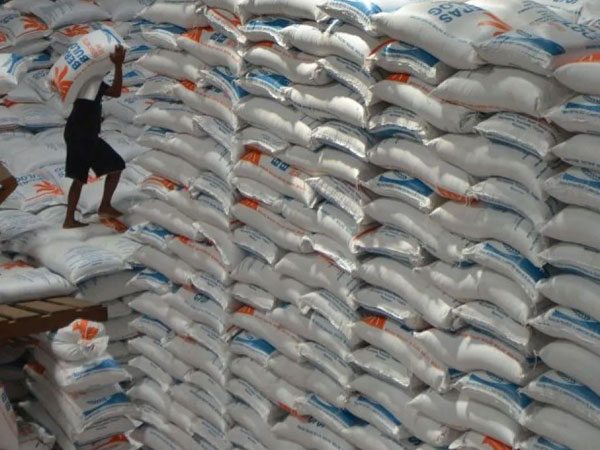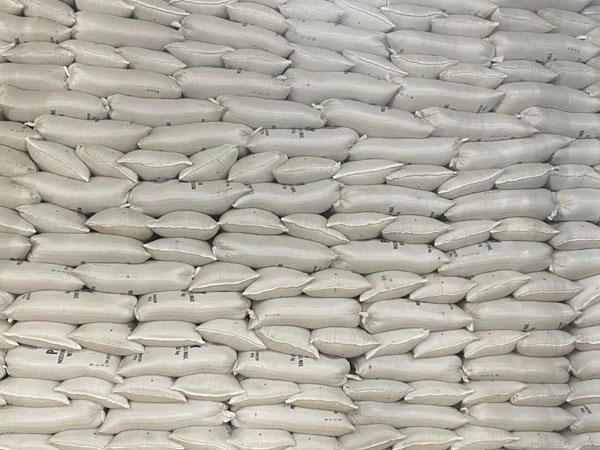 KANSAS CITY, MISSOURI, US – Rice prices have eased despite the prospect of record consumption and an expected reduction in output from last year’s all-time high.
KANSAS CITY, MISSOURI, US – Rice prices have eased despite the prospect of record consumption and an expected reduction in output from last year’s all-time high.
The International Grains Council (IGC) said in its Grain Market Report, published on July 17, that “against the backdrop of limited buying interest and strong export competition, average international rice prices declined by 1% m/m (month on month).”
“In Thailand, 5% broken white rice export values fell by $12, to $374 fob (Bangkok), on limited fresh demand,” the IGC said. “Similarly, 5% broken prices in Vietnam were fractionally down, at $378 fob (Ho Chi Minh), reflecting subdued enquiries from the Philippines.
“Parboiled quotations in India were unchanged (month on month), at $376 fob (Kakinada), but with competitively priced supplies in Thailand weighing on market sentiment. Elsewhere, South American export prices posted further losses, pressured by ample supplies and subdued interest from international buyers.”
The United Nations Food and Agriculture Organization (FAO) reported on July 4 in its Rice Price Index that prices in June were down 0.8% from May and nearly 23% below their levels of June 2024.
“Indica prices drove the June decline, shedding 1.1% of their May level,” the Rome, Italy-based organization said. “Japonica and Glutinous prices were also down by 1.8% each, largely due to a slowdown of short-grain sales in Vietnam and of glutinous purchases by China and the Philippines.”
Conversely, the Aromatic Index strengthened by 0.7% month on month, amid tightening basmati supplies in Pakistan and a continued brisk pace of Hom Mali exports in Thailand, the FAO said.
“June trading activities were slow in Asian markets of Indica rice, as buying interest was generally subdued and surges in freight rates registered at the start of the month weighed on containerized trade,” the FAO said.
Although sales to regular African outlets provided some underpinning to quotations in India, as did thinning exportable availabilities in Pakistan, the quiet pace of trade caused quotations to falter in other origins, the FAO said.
“Falls were steepest in Vietnam, where in the wake of a good winter-spring crop, copious imports and the launch of the early summer-autumn harvest, prices of 5% broken rice dropped to their lowest since January 2022,” the FAO said.
The FAO explained that falls in Thailand occurred despite a sustained rise in the Thai baht’s value against the US dollar.
“The market undertone was also weak in the Americas, as efforts to attract sales of the bumper crops just harvested in the Mercosur origins heightened competition for regional markets,” the FAO said. “The bearishness defied the influence of currency appreciations against the United States dollar in Brazil and Uruguay, and of growing signs (eventually confirmed by a planting survey) that adverse weather caused a steeper than previously envisaged fall in long-grain plantings,” in the United States.
The US Department of Agriculture (USDA) now puts world rice production in 2025-26 at 541.3 million tonnes (milled basis), down 300,000 from its previous forecast and 200,000 below the previous year’s record, the USDA’s Economic Research Service reported in its July 15 Rice Outlook.
“The United States accounts for the bulk of this month’s reduction in global production,” the ERS said. “In addition, Turkey’s 2025-26 production forecast is lowered slightly, while Mexico’s production forecast is raised slightly.”
The USDA figure for global rice consumption in 2025-26 is a record 541.6 million tonnes, up (550,000) tonnes from the previous forecast and 1.5% more than the previous year.
“China accounts for the bulk of the upward revision in global consumption, up (650,000) tonnes to 146.7 million, 0.5% larger than a year earlier,” the ERS said. “The growth is driven by expanded use of rice as an animal feed.”














© Copyright 2025 The SSResource Media.
All rights reserved.